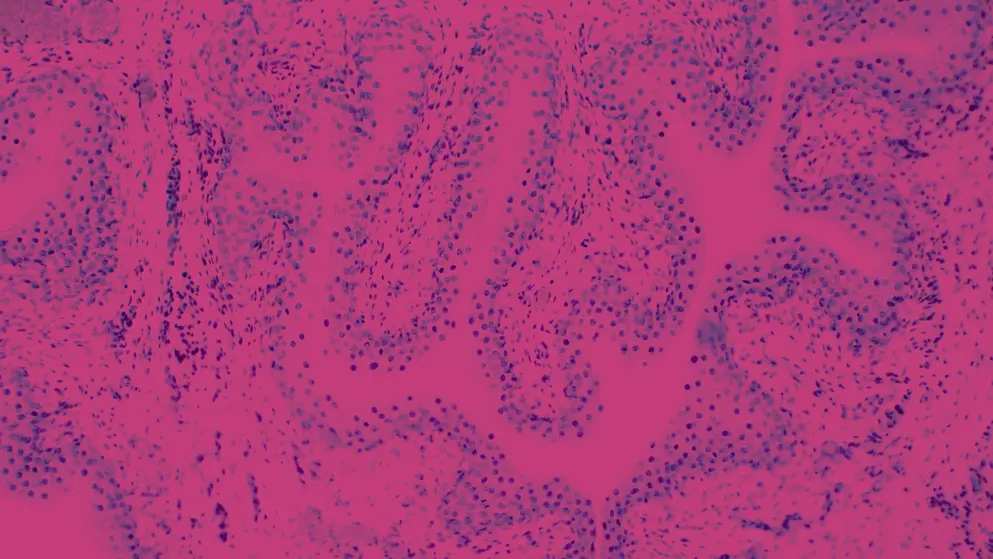
Managing High-Risk NMIBC
Transcript: Expert perspective: BOND-003 at AUA 2025
Mark D Tyson II, MD, MPH
Interview recorded April 2025. All transcripts are created from interview footage and directly reflect the content of the interview at the time. The content is that of the speaker and is not adjusted by Medthority.
Yeah, so cretostimogene is an adenovirus-based drug that selectively replicates in RB pathway-deficient cancer cells. It also expresses GM-CSF, which is an immunostimulatory cytokine that enriches the tumour microenvironment, and so together, the immunotherapy and direct tumour cell lysis result in a pretty effective and well-tolerated drug, it would appear, based upon the results of BOND-003.
The unmet need it's intending to fill is patients with BCG-unresponsive non-muscle invasive bladder cancer, for whom there really, historically, hasn't been a lot of options, although that's changed in recent years. Most of these patients have had to undergo a cystectomy in the past because they haven't really responded to standard of care intravesical therapy, such as BCG.
But, now there's other drugs on the horizon, or drugs on the landscape that's been approved. Cretostimogene is yet another really excellent option in the pipeline. Yeah, so BOND-003 single-arm open-label trial, it's a registrational trial, and it's evaluating cretostimogene in patients with BCG-unresponsive CIS disease according to the Food and Drug Administration, according to their definition. So very heavily pretreated, difficult to treat population. Patients receive dosing once a week for six weeks for induction, and then once a week for three weeks for maintenance, every three months for a year, and then every six months for two. The primary endpoints are complete response at any time point and the duration of response. And at the AUA this last year, we presented those data, and top line numbers looked good for complete response rate any time point and duration of response. It was 75.5% in 27.9 months respectively. So that means three out of four patients had a favourable response to cretostimogene. And the median time of that response was two and a half years to, you know, over two years, which is pretty good.
On the other side of the equation is tolerability, and we found that cretostimogene was really well-tolerated with mostly grade one or grade two AEs. These are, you know, mostly urinary symptoms, it's intravesical therapy at the end of the day. Patients are expected to have some frequency and urgency. Usually it's short-lived for a day or two. We saw that in the data, the median duration of the grade one and grade two AEs was about a day. There were no grade three or higher AEs that were related to the treatment or treatment-related discontinuations, and then there were no deaths, which is good to see. So I think a well-tolerated and pretty effective drug. Well, I think this'll probably be the last time Cohort C is presented in this format. It'll probably be published next, and I hope to see a publication sometime later in the summer. But what's next for the trial in general and cretostimogene perhaps at a larger scale is the Cohort P. So the papillary only cohorts, patients who do not have CIS but have BCG-unresponsive papillary disease, that definition differs a little bit from the CIS definition. There are people who have had a recurrence within six months after five plus two or with a T1 recurrence immediately after induction. So very similar to Cohort C's difficult to treat population, and I think we should see results from that trial I would guess, you know, read out hopefully next year at the AUA as well.
So that's what's next for Cohort P, or BOND-003, rather. But creto's being studied in a whole portfolio trial, intermediate risk trial called PIVOT-006, BCG-naive concept in the CORE-008, BCG-exposed concept there as well. So cretostimogene has actually kind of, it has a footprint kind of in many different disease states at the moment. Yeah, I think it would just be yet another really good option to choose from. I think there's a number of drugs that are in the space and that are entering the space. And creto is gonna be, I think, one of the most compelling to choose from just because of its, you know, risk benefit ratio, you know, it's very well-tolerated and effective, so. So I think that the combination of that is gonna make this an attractive option. It's pretty easy to give. Nurses are already kind of accustomed to giving intravesical therapy from, you know, our practice's experience with BCG, and gemcitabine, et cetera. So I think it's immediately gonna make a big splash.
Developed by EPG Health. This content has been developed independently of the sponsor, Pfizer, which has had no editorial input into the content. EPG Health received funding from the sponsor to help provide healthcare professional members with access to the highest quality medical and scientific information, education and associated relevant content. This content is intended for healthcare professionals only.

